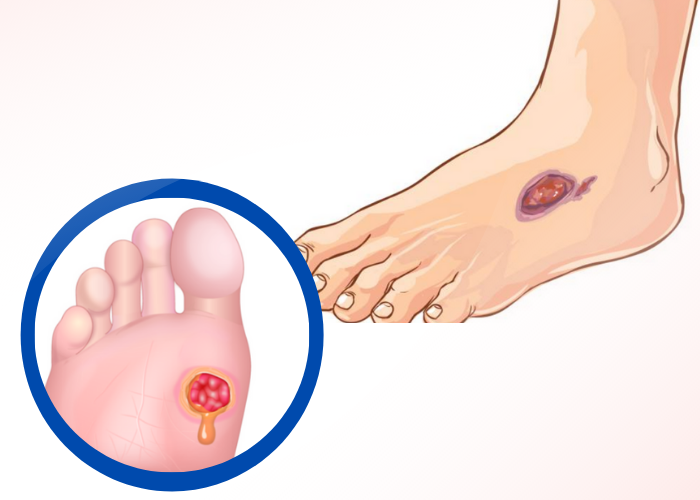It’s not unusual for wounds, blisters, or sores to heal themselves. The body can recover themselves with the right amount of care and clean. If the wound doesn’t heal after four to six week, or if it begins to appear more swollen in appearance, like becoming redder or swelling or emitting a bad smell, it’s an indication that something isn’t right. Sometimes, a wound that appears small could turn into an unhealing leg or foot ulcer and, if not treated, these can lead to serious complications, even amputation in extreme cases.

If you’ve been waiting for a sore to heal that doesn’t heal, it may be time to stop waiting and seek help.
Some wounds are not healed.
Knowing the reasons why a wound won’t heal will help you and your physician determine the best method of treatment.
If you’re diabetic the chance of developing leg and foot ulcers is high. The high blood glucose levels could harm nerves and create difficult to feel the injury. They also reduce the flow of blood.
Another reason is a lack of circulation, which is usually linked to venous or arterial ulcers. If your arteries, veins or vessels aren’t working it means that your blood isn’t providing enough nutrients and oxygen to help heal your skin.
In addition, if you spend a lot of time resting or lying down as a result due to mobility problems, you could develop pressure ulcers (bedsores) another type of wound that can be incredibly stubborn if not treated correctly.
Healing may be slowed by other factors, such as age, certain medications immune-mediated diseases, and inadequate nutrition. There is a chance that a mix of these factors could make a wound persist.
How long does healing normally take What happens if it doesn’t happen?
It’s natural to wonder how long healing “should” take. The truth is, the length of time required to heal is dependent on your condition and kind of wound. Minor blisters or cuts may be healed within a couple of weeks. But if you’re dealing with a deeper foot ulcer or leg wound won’t heal, it might take up to 12 weeks if things are going well.
The most important thing to keep in mind is that if you’re not experiencing any improvement in four to six weeks, don’t delay. It’s time to see a doctor for wound treatment because the longer that a wound is left open, the more dangerous it becomes.
Find the right support for you
If the sore doesn’t heal the same way, it’s not “bad luck” or a reason to not pay attention to your body is trying to tell you it requires assistance. The positive side? Experts and treatments could make a difference. At our clinic, we specialize in treating non-healing feet leg ulcers and leg wounds, as well as working with your other medical professionals to develop an individualized plan that allows your body the best chance of healing and can prevent amputations.
It doesn’t matter if it’s the latest wound dressings, or restoring blood flow, or the use of hyperbaric oxygen as a special therapy treatments, there are options out there. We’ll be with you in every step, since we are convinced that no person should ever have to deal a wound which won’t heal.
Final Thoughts
The pain of a wound that doesn’t heal is more than just a physical issue. It impacts your entire life. There is some hope. Don’t be afraid to seek assistance if you’re frustrated with a leg ulcer that will not heal an ongoing sore or a painful foot wound that’s not healing. If you get in touch to get help, the faster the wound you’ve been struggling with will heal and you can resume the life you’re entitled to.
